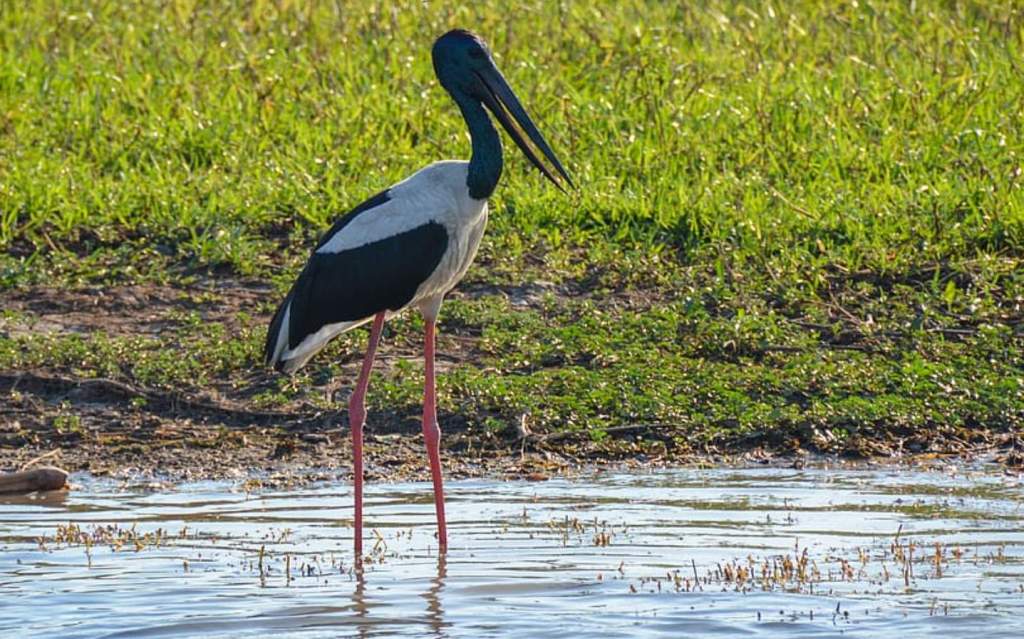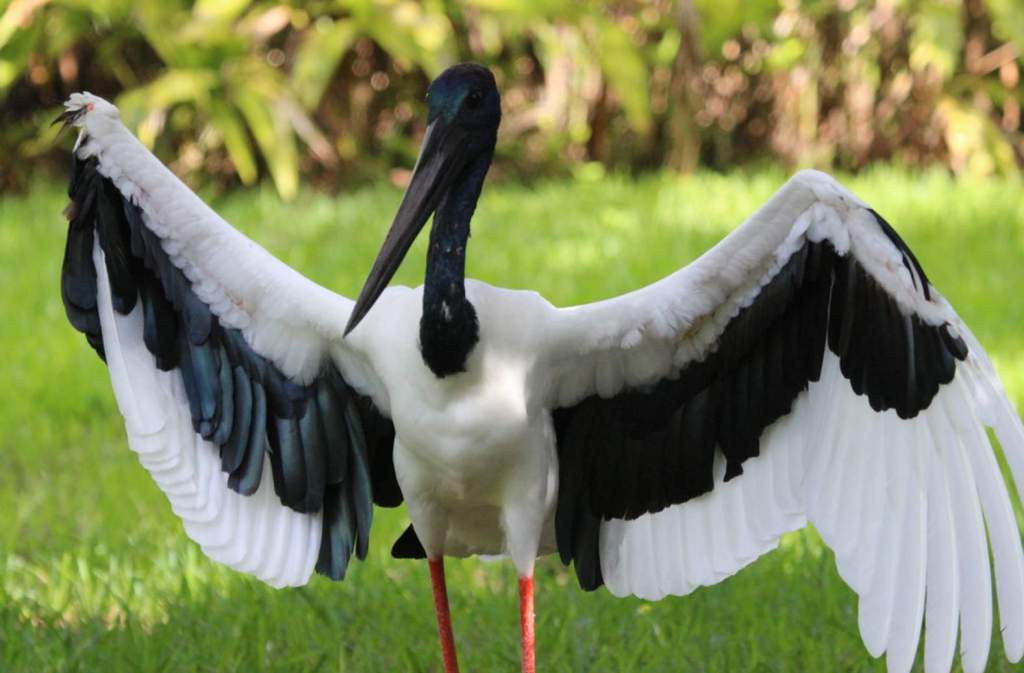Family:
The black-necked stork is a long-necked wading bird in the stork family.
Habitats:
There are some storks (Ephippiorhynchus asiaticus) that are sociable, but the Black-necked Stork, Australia’s only member, is usually seen alone or in a loose group. Some birds, however, appear to hunt independently of each other, striding through shallow water, and probing with their large, powerful bills. Soaring as high as several hundred meters, the birds’ heads and legs trailing behind them. The female Black-necked Stork above has yellow eyes.
Alternative Name:
Jabiru is another name of it. In the mistaken belief that this bird is Aboriginal, the name ‘Jabiru’ has become popularized. The name is actually Portuguese and is used for storks in South America and Africa. For Australasian species, the Black-necked Jabiru is the only reasonable alternative.
Diet:
A Black-necked Stork is a freshwater forager whose main food is fish, but they also eat reptiles, frogs, crabs, rodents, and carrion. A bird may run a few steps, catch its prey with a rapid forward thrust of its bill, and swallow it with a backward jerk of its head when hunting active prey. The majority of the time, however, they stand and wait or stalk slowly, as herons do. The birds may congregate with other birds to feed on massed fish in well-stocked pools on rare occasions, such as when the pool is drying up. New pairs may not form every year since the adult pair stays together during the non-breeding season. There are few social displays by the birds, but they do occur at the nest as well as away from it.

Size:
Black-necked Stork measures about 1100-1300mm long (stands about 1200 mm high).
Weight:
A single specimen of this species weighed 4,100 grams (9 pounds), but this is nearly 35% less than the saddle-billed stork’s mean body mass.
Identification:
Both sexes are similar. Head, neck, scapulars, and tail with a broad band extending across the center of both upper and lower wing surfaces. The skin is glossy green-black with a glowing appearance. The rest of the plumage is white. Adult males have dark eyes, and females have yellow eyes. The bill is black. Legs and feet are red. The immature bird is grey-brown with the rump, breast, and belly dull white. Eyes are dark brown. Bill is black. Legs and feet are dusky. The downy young is off-white with a grey crown; the bill is dusky; the feet are flesh-colored.
Vocalizations:
There were no other sounds except clattering sounds made by shaking Bill up and down in a threatening and dancing display.

Nesting and breeding:
Nesting and breeding occur between February and June. The nest is a large, bulky stick platform, up to 1.8 meters wide and 0.9 meters deep. It is built high (up to 25 m) on top of a tall tree. The nest is a substantial structure at or near the top of a tree or large bush often in a swamp. Constructed of fine sticks, sometimes over a meter long, laid over one another, the top is tramped into a platform. A layer of dried reeds and grass about 20 centimeters thick is placed on top with a hollow for eggs. It is possible that the non-brooding bird will also rest on the platform at night. Both males and females build or repair the nest and incubate the eggs. The same nest may be used year after year. Both parents feed the young by regurgitating food onto the nest floor.
On hot days the parents bring water to the nest and regurgitate it over the upward-pointing bills of the begging nestlings. From 30 days, the young are often left alone in the nest. By this time they have developed a defense display that involves bill clattering, standing erect, and lifting their wings. When they are 100-115 days old, they are ready to leave the nest. Black-necked Storks start their flight with two or three running jumps and fly with slow wings flaps alternating with short glides.
Eggs:
Black-necked Stork lays 2 to 4 eggs, white color; oval shape, about 72 x 53 mm.
Incubation:
Incubation by both sexes. Young will fledge in 100-115 days.
Distribution:
Along the north and east coasts, sometimes as far south as Sydney, but less common in the southern part of the range. Rare vagrant to Victoria. Frequently found near lakes, swamps, freshwater pools, and mangroves. Also found in Papua New Guinea and southern Asia.
Races:
There are two races that exist. One with the bottle-green neck in Australasia.
Read More – The Black-eared Cuckoo







